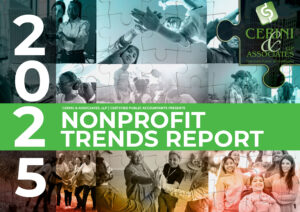An active strategic plan is a critical puzzle piece for the success of a nonprofit organization. This is the document that should include guideposts for your organization’s future, a foundation for alignment, and a clear picture of your priority areas. Many organizations have been functioning in crisis management over the last 5 years or so. Nonprofits should use 2025 as the year to once again think strategically.
Here are the some of the most significant challenges – and areas to be particularly cognizant of in planning for 2025:
💪 Capacity & Resource Constraints – Stating the obvious here…but nonprofits often operate with limited financial, human, and time resources, making it difficult to dedicate sufficient effort to robust planning processes. This makes the need to prioritize and define your mission pillars even more critical.
💚 Mission Creep – Balancing innovation with the core mission can be challenging. External funding pressures or shifting community needs may tempt organizations to pursue opportunities outside their original mission.
📊 Access to Data & Evidence – Limited access to accurate data for decision-making can hinder the development of realistic and impactful strategic goals.
🤝 Stakeholder Alignment – Engaging diverse stakeholders (e.g., board members, staff, funders, and the folks you serve) is essential, but it can also lead to conflicting priorities or visions for the future.
☑️ Implementation & Accountability – Translating a strategic plan into actionable steps often falters due to unclear roles, lack of accountability, or difficulty in monitoring progress.
😨 Rapidly Changing External Environment – Think: The “Threats” in your SWOT Analysis – the external factors that are out of your control; the most daunting. These are typically the economic, political, and social shifts that can wreak havoc on your strategic plan.
Addressing these challenges requires intentionality, ongoing communication, and a commitment to creating a culture of continuous improvement. One of my favorite nonprofit leaders likes to say, “Culture eats strategy for breakfast!” But the good news is there are reliable best practices to stem the tide of challenges – I’ll leave you with a few:
- Engage Stakeholders: Involve all relevant parties in strategic planning to build buy-in and ensure diverse perspectives.
- Prioritize Capacity Building: Invest in staff and board training, including leadership and fundraising skills.
- Use Data-Driven Approaches: Leverage technology and partnerships to access the data necessary for informed decision-making.
- Foster Board Accountability: Set clear expectations and conduct regular assessments (and self-assessments!) of board performance.
- Plan for Flexibility: Design strategic plans with adaptability and monitoring practices in mind, allowing for adjustments in response to external changes.
- Strengthen Recruitment Pipelines: Develop targeted recruitment strategies to find board members who align with the organization’s mission and needs.






No comment yet, add your voice below!